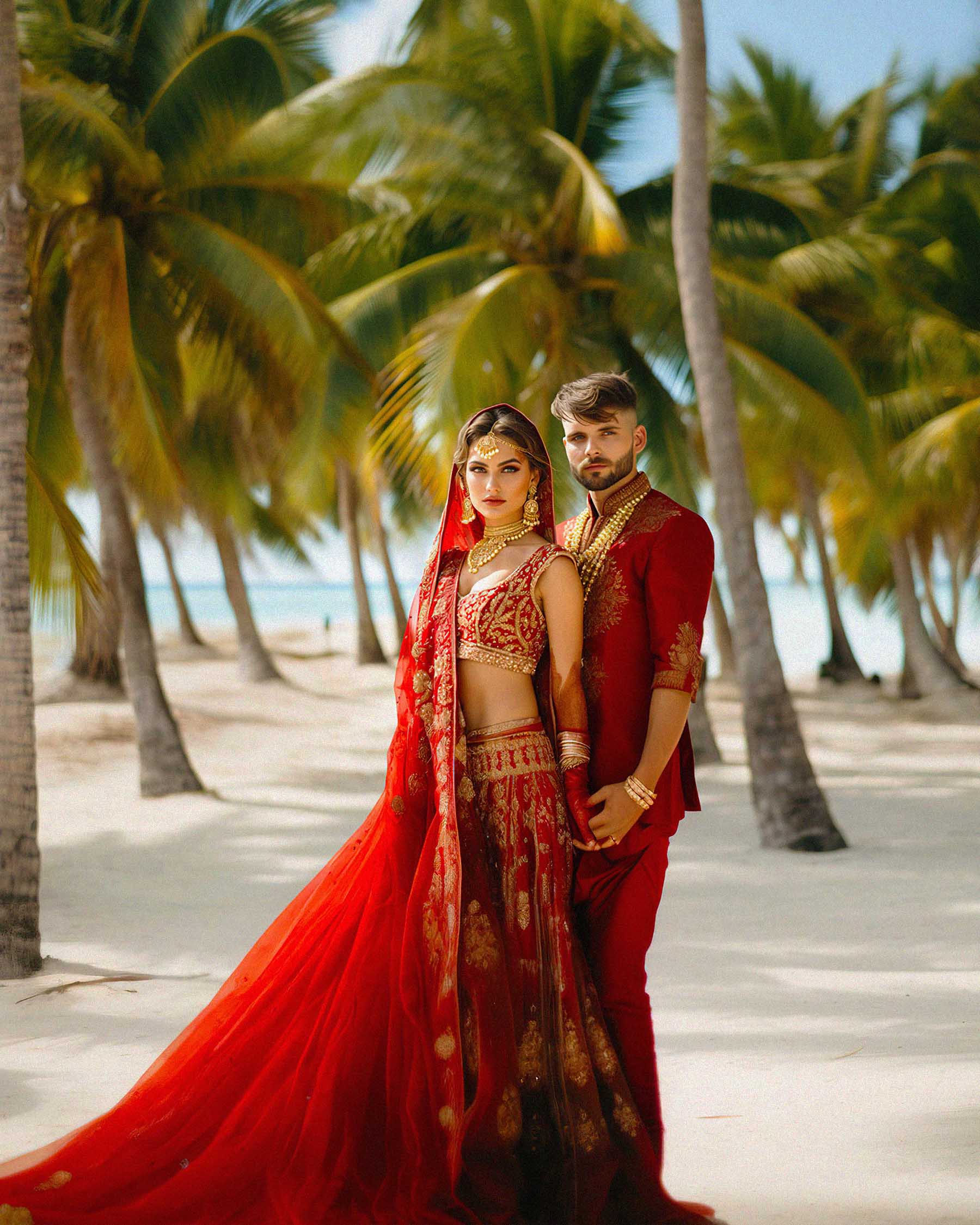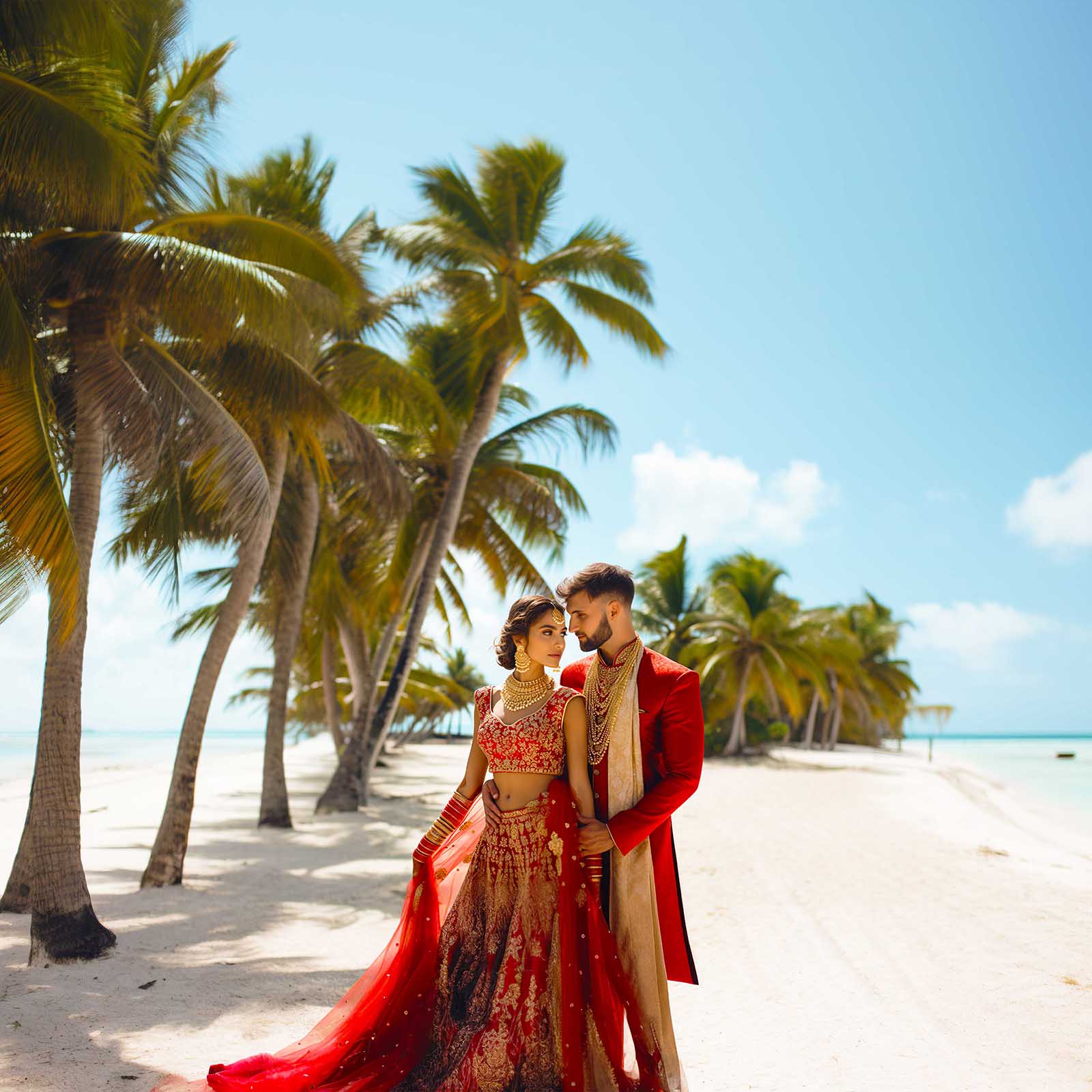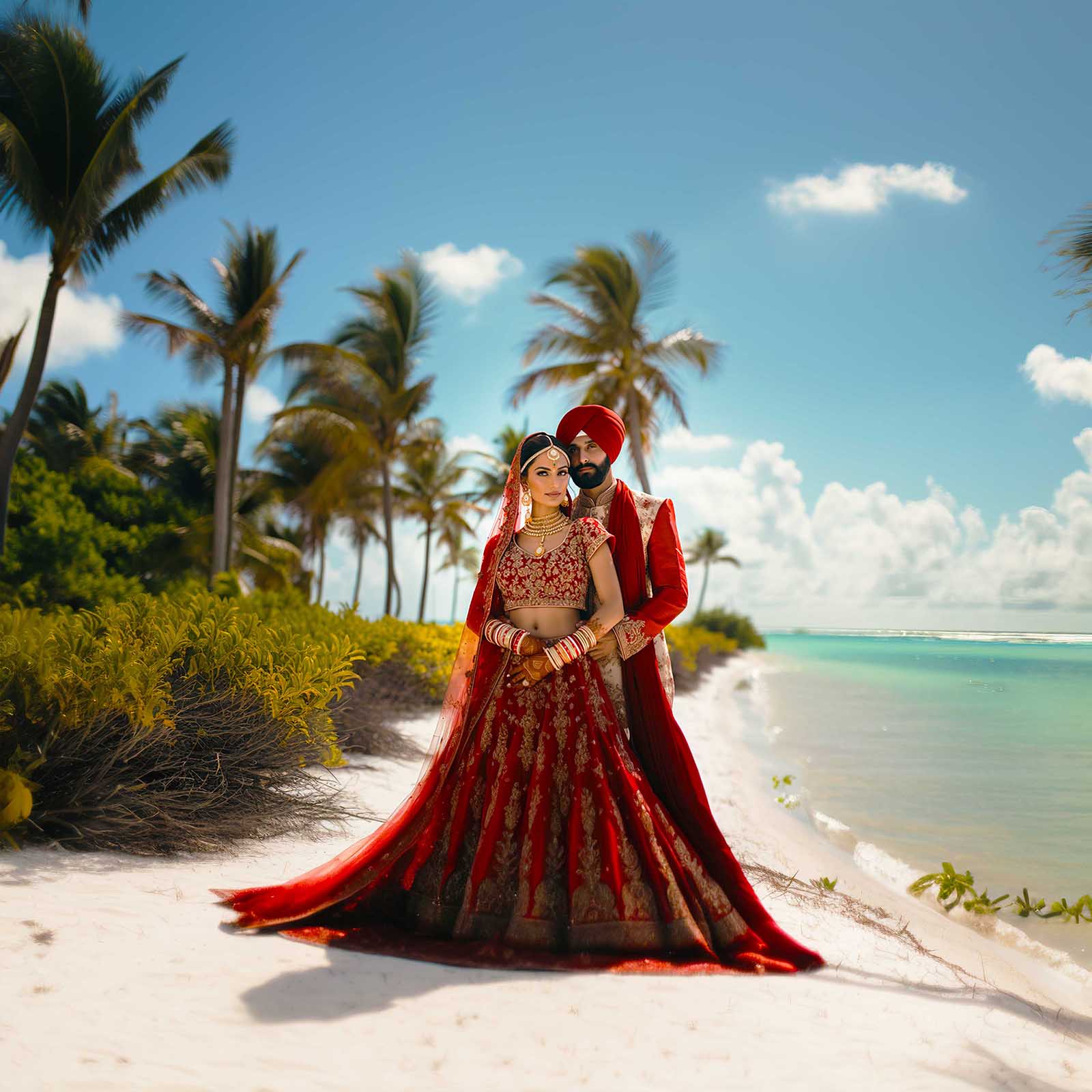Pick A Venue
We’ve seen them all, and we’ll help you pick the right one.


We’ve seen them all, and we’ll help you pick the right one.
We’ll set your guests up with the best group deal on the planet.
We’ll help you set up your happily ever after, tropical fairy tale.
Enjoy the wedding escapade of your dreams, it’s finally time!

*Video Credits: XO Stories (Destination Wedding Cinematography & Photography)
Dream Destination Wedding
Dream Destination Wedding
Dream Destination Wedding
Dream Destination Wedding
Dream Destination Wedding
Dream Destination Wedding

Are you Indian and looking for more than a traditional Hindu or Sikh ceremony? If so, let our expertise and experience help. We can assist you with pandit/guru arrangements, venue options, mandap/wedding stage décor, classical music, wedding themed music and dance, video and still photography, menu options, mehndi (henna) artists, fireworks, transportation, wedding cake, champagne, floral décor, and light decorations. We offer a variety of wedding packages, and the list of possibilities is as limitless as your love for one another.
Last year, we booked more Hindu and Sikh destination weddings than anyone else in Canada, so you can trust that we have the experience to make your traditional ceremony beautiful and memorable. We have a very diverse background; many of our wedding specialists are from South-Asia, so they know all the intricacies and complexities involved while making Indian Destination Weddings possible, and most importantly, successful. Don’t put your fate in the hands of someone who doesn’t have the professional experience with weddings abroad or the personal experience with traditional Indian weddings that we have. Your wedding is a once in a lifetime event, and we want to make sure you experience it just the way you should.
Watch a real life, short video testimonial from one of our happy Indian destination wedding brides. Her dream Sikh destination wedding took place on the sunny sands of Riviera Maya in Mexico. Absolute Wedsite does more Indian destination weddings than anyone else in the Toronto area, or Canada. We are simply number 1.
Watch
Hindu marriages are a testament to deep customs and rituals, and the celebrations are sure to be filled with a lot of excitement. There are a great wealth of rich cultural traditions and heritage associated to the Hindu wedding process. Hindu’s consider marriage to be a very important religious ceremony; it is the most important of the sixteen ‘sanskars’ (sacraments) of the religious faith. It signifies the new and everlasting bond between two people and between two families. The weddings are usually hosted by the parents of the bride at a common place of agreement between both families. In most cases, the weddings are conducted in open spaces under decorated coverings which are known in the Hindi language as a ‘mandap’.

Over many customs and theologies, Hindu weddings tend to extend up to five days in length. The ceremonies are split into three parts (pre-wedding, wedding day ceremony, and post-wedding rituals). Each of these customs and rituals has a very deep religious significance.
The pre-wedding celebrations include the engagement, sangeet, mehndi, haldi and tilak.
The wedding day ceremonies involve different rituals of their own religious meaning. The most important of these rituals is the seven rounds or ‘saath phere’ taken by the bride and groom around the sacred fire, whilst the seven vows are read by the priest. The couple take their vows before God, who is symbolized in the ritual by fire and light, building the foundation of their relationship. The vows speak loyalty, love and commitment that the two will share during their lifetime as a married couple.
The post wedding ceremonies are then performed which cover vidaaj and the reception celebrations. This is usually the most emotional part of the wedding, as the bride takes leave from her family and steps foot into her husband’s home for the rest of her life. When reaching her new home, the bride is also welcomed through some more customary rituals and sometimes with a brief celebration to set the right mood for her arrival.
According to the Hindus, there are four main stages in one’s life, of which marriage is the second stage. This stage begins with a man and woman coming together in marriage, which teaches the couple some of the most important values of life. Hindu weddings not only involve a bride and groom, but the entire community of friends, family and relatives, as everyone participates in their coming together. Some hindu marriage ritual customs involve parents performing arranged marriages of their son/daughter.
After a wedding has been decided on, family members of both the bride/groom-to-be ask a priest to suggest an auspicious date for the engagement, which is known as ‘misri’ or the ring ceremony. The Hindu culture boasts many various cultures and traditions, so the engagement ceremony usually differs by region and community. The basic ritual, however, still involves the to-be bride and groom exchanging rings.
The next most important ritual is the mehndi party. It is said that the colour of mehndi (henna) represents the essence of love in a marriage, so it is put on the bride’s hands to strengthen the bond of love between them. This event is mostly celebrated between the bride’s family and friends. The female family and friends also have the mehndi put onto their hands and feet as well. The event is marked by singing traditional songs and dancing.
Another important ritual is the sangeet party, where the family and friends of both bride and groom celebrate the upcoming marriage. Along with song and dance, there are also a wealth of food and drinks. Large sangeet parties are usually popular among punjabis, marwaris and gujaratis, although most regions and cultures today also practice this ritual.
On the morning of the wedding day, the haldi ceremony takes places. In this ritual, the bride and groom are pasted with turmeric powder in their homes, as part of a beautification process.
The wedding ceremony usually takes place under a ‘mandap’ or a tent, which is decorated with flowers and with many traditional colours. The hindu wedding ceremony is a very long and elaborate affair, which can take several hours and is attended by a very large number of family, friends and acquaintances. One of the most important rituals the bride and groom perform is the ‘saptapadi’ or ‘saath phere’ around the sacred fire which represents god. The priest recited the ‘mantras’, speaking of the real significance of marriage as the bride and groom take their seven rounds of the sacred fire. During this time, the groom fills ‘sindoor’ (vermillion) through the center parting of the brides hair, and then puts the ‘mangalsutra’ around her neck. Both of these symbols have a very strong symbolization and importance for married Hindu women.
The word ‘mangalsutra’ comes from the words ‘mangal’ (auspicious) and ‘sutra’ (thread). A Hindu marriage not only symbolizes a union of two people, but also of bond, understanding, commitment, mutual love, oneness and spiritual growth. Traditionally, Hindu marriage was much more than celebration and fun, but demanded sacrifice, companionship, dedication and devotion from both partners. Each ritual and custom in the wedding process portrays its own essence of marriage to make the entire wedding process complete. Traditionally, there are five signs of marital status of a hindu woman; the ‘mangalsutra’, toe rings, ‘kumkum’, bangles and a nose ring.
The mangalsutra is not just a jewellery piece, but a sacred thread of love and goodwill worn by married Hindu women, as a testament to their successful marriage. It is believed the mangalsutra has its roots associated to south india, and having its unique importance worked its way into north india.
It is very auspicious for married women, and is believes to have diving powers. Each of the black beads in the mangalsutra signifies protection from evil power and are believed to protect the marriage of the couple and the life of the woman’s husband.
The wedding day is the important day in a hindu bride’s life. Most of them have dreams for this day since when they were little girls, since it marks a huge point of change in their lives. Some of their female friends and family will join them in the beautification process prior to the ceremony. There are sixteen parts to this, which cover their entire body from head to toe. The parts are: bindi, sindoor, maangteeka, anjana, nath, haar, karn, mehndi, choodiyan, baajuband, aarsi, keshapasharachana, kamarband, payal & bichuas, itar and the bridal dress.
Punjabis are known to be openhearted and jolly people. They are also very strong and ambitious in their festivities. This reflects greatly in their marriage celebrations, which include their shares of rituals but are also extremely fun. The punjabi wedding is usually the most colourful and musical, in which each ceremony is another excuse for fun and excitement. Most weddings are marked by big carnival-like celebrations. The wedding ceremony begins with roka, which is like an engagement where both families formally announce the wedding. Later are more events such as the ‘sagan’ (groom’s family) and ‘chunni chadana’ (bride’s family). The weddings consist of ‘sangeet’ and ‘mehndi’ ceremonies, which is where the real fun starts, in addition to ‘bhangra’ and ‘gidda’ sessions. The wedding ends in ‘mangal pheras’ before the bride is departed to her groom’s home.

Punjabi traditions are filled with many rituals and begin many days before the wedding.
The wedding preparations start days before the actual wedding ceremony. Punjabi weddings are known to be very vibrant and colourful. The ceremony consists of many important rituals.
Punjabis love to celebrate even a few days after the wedding.
Having a diverse multicultural team, we know the importance of international foods, especially at weddings. Therefore, at many resorts, it is possible for our Indian wedding groups to have Indian snack and meal items such as samosas, vegetable kabobs, chana masala, shrimp tikka, chicken tikka, gobi, chicken seekh kabab, masala sressing, yogurt with fresh herbs, serrano chutney, lemon rice, colorful marzipan of almond, walnut and saffron, doodh & coconut, karanji, and more.
